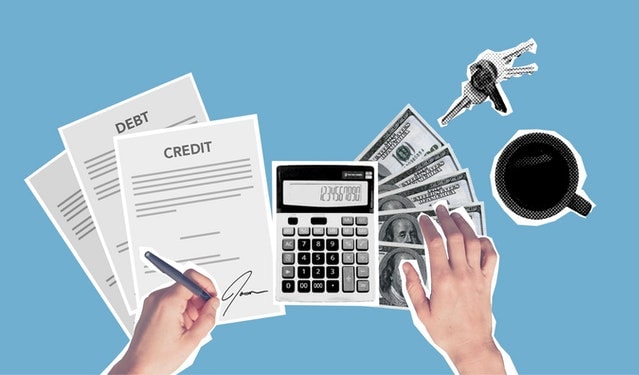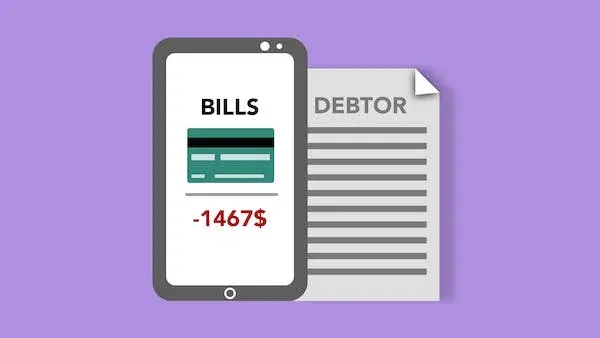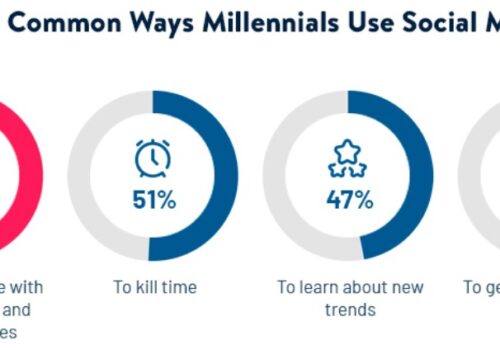Student loan debt is a significant financial challenge faced by many students today. It’s money that students borrow to pay for their education, like college or trade school, and later need to repay.
These loans help students pursue their dreams but can also create a burden. Estimates suggest that the amount of student loan debt has been growing over the years, impacting young people’s financial futures.
In this context, understanding the extent of this debt issue is crucial to finding solutions and supporting students on their educational journeys.
| Statistic | Data |
|---|---|
| Total student loan debt in the U.S. (2024) | $1.63 trillion |
| Americans with student loan debt | 46 million |
| Federal student loan borrowers | 43.4 million |
| Student loans 90+ days overdue or in default (pre-COVID) | 11.1% |
| Typical monthly student loan payment (pre-repayment freeze) | $300 |
| Average U.S. household student debt | $58,238 |
| Average cost of college (2022-2024) | Public: $23,950, Private: $41,400 |
| FAFSA non-completion rate (2024 graduates) | 56% |
| Enrollment in the SAVE plan | 6.9 million |
| Default rate: Public and non-profit colleges | 2.3% |
| Default rate: Private non-profit colleges | 1.7% |
| Default rate: Private for-profit schools | 3.1% |
| Private student loan debt (2024) | $178 trillion |
| Consigned private student loans | Undergrad: 90%, Grad: 63% |
| Loans in deferment | 17.49% |
| Expected borrowing for bachelor’s degree (Class of 2023) | $37,300 |
| Student loan debt for adults aged 25-34 | Nearly $500 billion |
| Student loan debt for adults aged 35-49 | $632 billion |
| Percentage of student aid recipients achieving financial independence | 49.2% |
| Delinquency rate for borrowers under age 40 | 15.1% |
| Female share of student financial aid recipients | 56.5% |
| Women’s share of all student loan debt | 58% |
| Federal loan borrowing rate: Black college students | 49.4% |
| Federal loan default rate within 12 years: Black degree holders | 30% |
| Private loan borrowing rate: White students | 7.1% |
Student Loan Debt Estimates Of 2025
Let’s begin with a broad overview of the student loan situation. The following are some of the most recent statistics:
- The overall amount of student loan debt in the United States is nearly $1.63 trillion as of 2024.
- A total of 46 million Americans are in debt due to student loans (43.4 million of whom have federal debt).
- Before the coronavirus epidemic, 11.1 percent of student loans were 90 days or longer overdue or in default (defaults were halted as part of the crisis relief measures).
- Before the White House implemented the repayment freeze, the typical monthly debt payment was $300. (the suspension is in place through Aug. 31, 2022).
- For the class of 2020, the average was $28,400. The average U.S. household with student debt owes $58,238.
- (Federal Reserve, CollegeBoard, Federal Reserve Bank of New York, and LendingTree data.)
- Average Cost of College: In 2022-2023, the average cost was $10,950 for public four-year schools and $39,400 for private schools in tuition and fees.
- 56% of 2022 high school graduates did not complete the FAFSA, resulting in $3.58 billion in Pell Grant money unclaimed.
- Enrollment in the SAVE plan exceeds 6.9 million, with additional participants in PAYE, IBR, and ICR plans.
- Public and non-profit colleges’ default rate is 2.3%, private non-profit colleges’ default rate is 1.7%, and private for-profit schools’ default rate is 3.1%.
Portfolio of Federal Student Loans
Sources: Pexels
Stats on Private Student Loan Debt
Sources: Pexels
- Private student lenders are owed more than $136 billion to Americans.
- In the academic year 2020-2021, the total amount of private student loan debt was anticipated to be $12 billion.
- During the 2020-2021 educational year, someone else cosigned 90 percent of undergraduate and 63 percent of graduate private loans.
- Over 50 percent of undergraduates (53%) do not fully utilize federal student loans, instead opting for private loans before exhausting their federal options.
- Private student loans accounted for 16% of student loans in the 2019 class.
- In 2019, the average interest rate on cosigned private loans was 10.20%.
- (Information courtesy of the Institute for College Access and Success (here and here), CollegeBoard, and MeasureOne.)
- 17.49% are in deferment, 2.44% are in forbearance, and 0.94% of loans in repayment are 90+ days past due.
- A high school graduate in 2023 could expect to borrow $37,300 for a bachelor’s degree.
Further Student Loans
Student loans are intended to pay only a portion of educational expenses.
Many students loan money from other sources to meet living expenses throughout their college years and perhaps other institution-related expenses that are not supported by their student loans.
- A balance on a student loan is owned by 95% of borrowers with outstanding debt connected to their own education.
- A credit card balance is held by 23% of debtors with existing educational debt.
- A home equity loan was used by 4% of indebted borrowers, while 11 percent used another sort of loan.
- Home equity loans were used by 11% of indebted people who borrowed to pay for their offspring’s or grandchild’s education.
- Student loans (96%), credit card debt (19%), home equity lines of credit (4%), and other types of credit (11%).
- Adults aged 25-34 owe nearly $500 billion, while those 35-49 owe $632 billion. Those 50-61 and 62+ owe $296 billion and $115 billion, respectively.
Student Debt Statistics
Student Loan Debt by State and Graduation Year are included in detailed demographic reports.
- Financial independence is achieved by 49.2 percent of student aid recipients.
- 24.4 percent of student financial aid recipients live with their parents, while 14 percent reside in school-owned housing.
- 15% of students who receive financial aid are married.
- 3.3 million borrowers under the age of 40 are delinquent on their student loans, accounting for 15.1 percent of all borrowers.
- 338,608, or 17%, of student borrowers under the age of 25 are delinquent on their student loans.
- Gender or Sex Differences in Student Loan Debt.
- Females account for 56.5 percent of student financial aid beneficiaries.
- Women are responsible for 58 percent of all student loan debt.
- Male students’ parents are likely to borrow money on their behalf.
- Undergraduate student loan debt affects 16% of women.
- Women account for 8% of all postgraduate student debt.
Read our report on Student Loan Debt by Gender for more information.
Race and Ethnicity Differences in Student Loan Debt
- Black college students are by far the most inclined to take out federal loans (49.4%), while Asian students are the least able (62%) to take out federal loans.
- In the first twelve years of repayment, 30% of black degree holders default on their student loans.
- White students are the most likely to take out private loans, with 7.1 percent doing so; American Indian and Alaska Native students, on the other hand, are the least inclined to take out private loans, with only 2.6 percent doing so.
- After four years, 48 percent of Black graduates retain an average of 12.5 percent more than they acquired.
- White and Caucasian debtors are responsible for 54% of all student loan debt.
Read our report on Student Loan Debt by Race for additional information.
Debt from Student Loans by Age
- Every five years, debtors above the age of 60 add 50% to their age group’s student debt.
- The average outstanding student loan debt for 35-year-olds is $42,600 per borrower, with an ultimate total of 287 percent of the original loan value.
- 77.2 percent of help beneficiaries are under 30 years old, and 37.8% of aid recipients are full-time students.
- Under the age of 25, 17.7% of those with student loan debt are under the age of 25.
- Between the ages of 25 and 50, 68.6% of indebted student borrowers are.
- Student loan debt affects 34% of adults aged 18 to 29, placing them more than double as likely as adults of any other age bracket to have debt.
- With a rate of 63 percent among borrowers under 40 years old, Black borrowers are second-most inclined to be timely with their student loan payments.
- With a percentage of 26%, the same demographic segment is prone to lag on student loan payments.
Student Loan Repayment Status (Federal Student Loans)
Sources: Pexels
- In School: 6.1 million borrowers.
- In Repayment: 300,000 borrowers.
- In Deferment: 2.8 million borrowers.
- In Forbearance: 26.6 million borrowers.
- In Default: 4.7 million borrowers.
Educational Attainment and Student Loan Debt
- Graduate students take out 37% of all federal student loans.
- A total of $16,940 in federal loans is outstanding by 60 percent of undergraduate credential recipients.
- An aggregate of $21,890 in federal loans is outstanding by 42 percent of associate’s degree recipients.
- A total of $31,790 in federal loans is outstanding by 63 percent of bachelor’s degree holders.
- A total of $70,070 in federal loans is outstanding by 54 percent of master’s degree holders.
- An estimate of $118,360 is owned by 45 percent of Ph.D. degree recipients.
- Professional people with degrees owe an average of $199,540.
Debt Stagnation: What Can Be Done?
- Exploitative private lenders targeted undergraduates with bad loans, just as they did homebuyers prior to the Great Recession of 2008.
- These loan tactics were disproportionately used by for-profit institutions that enrolled low-income pupils.
- In 2009, 27.15 percent of private loans were uncertified by schools.
- By 2019, only 0.06 percent of private loans had been certified by a school. Since then, these loans have been limited to prime clients with excellent credit scores.
- Some of the growth in the combined student loan total can almost certainly be ascribed to debts beginning during the substandard student loan era. For years to come, the economic implications of this form of predatory lending will most likely be visible in data trends.
FAQs
💰 What is student loan debt, and how does it work?
Student loan debt is money borrowed to pay for education expenses. Students receive funds for tuition, books, and living expenses and must repay the loan with interest after graduation.
📚 What types of student loans are available to students?
There are federal student loans and private student loans. Federal loans are typically more flexible and have lower interest rates, while private loans come from banks and may have higher rates.
📊 How much student loan debt do college graduates typically have?
The average student loan debt varies by year and country. In the United States, for example, it's typically several tens of thousands of dollars.
📉 What are the consequences of defaulting on student loans?
Defaulting on student loans can result in serious consequences, including damage to credit scores, wage garnishment, and legal action by lenders.
🎯 How can students plan for student loan repayment while still in school?
Planning ahead includes understanding the terms of loans, estimating post-graduation income, and creating a budget for managing loan repayments.
💰 Are there any tax benefits or deductions associated with student loans?
Yes, some tax benefits may apply, such as the Student Loan Interest Deduction, which allows you to deduct interest paid on eligible student loans.
Quick Links:
- Social Media Statistics
- Instagram Statistics
- Blogging Statistics
- Pinterest Statistics
- Fascinating Online Shopping Statistics
- E-Learning Stats and Trends
Conclusion: Student Loan Debt Estimates Of 2025
Student loan debt is a significant and urgent concern that affects numerous students.
According to estimates, this debt is on the rise, which makes it more difficult for young individuals to afford their education and accomplish their goals.
It is crucial for policymakers, institutions, and individuals to address this issue by implementing financial aid reforms or educational initiatives to help alleviate the burden on students.
Finding solutions to reduce student loan debt is essential to ensure that education remains accessible, and students can pursue their dreams without being overwhelmed by debt.
Sources: Ticas, Federalreserve.gov, Educationdata.org, Studentaid.gov, Investopedia







